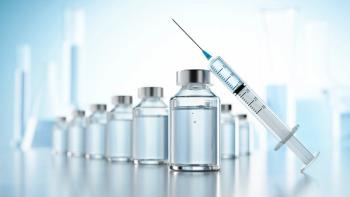
Few primary care physicians offer pre-HIV exposure prophylaxis
Pre-exposure prophylaxis is highly effective in preventing HIV transmission in high-risk individuals, but only about a third of PCPs recommend the treatment.
There are more tools than ever to manage patients already infected with HIV, but there has been little that primary care physicians could offer high-risk patients to reduce the risk of transmission-until recently.
The Centers for Disease Control and Prevention (CDC)
Despite the availability of this therapy, however, few physicians offer the medication to help reduce the spread of the disease, for which there are roughly 47,000 new cases each year.
In a new study titled,
The study concluded that educational efforts targeting PCPs without PrEP experience might increase usage, and that educational efforts should specifically address safety concerns and fears that PrEP would increase risk compensation among patients.
PCPs, who have regular contact with patients and likely know which patient groups are at risk, are uniquely positioned to provide PrEP because of their focus on health promotion and disease prevention, yet many don’t offer prophylaxis to their patients.
“The reasons are likely multifactorial. In our study, we found that compared with PCPs who reported PrEP adoption, non-adopters reported lower PrEP knowledge, were less likely to perceive PrEP as safe and were more likely to believe that PrEP would increase HIV risk behaviors,” Blackstock told Medical Economics.
Therefore, lack of knowledge and concerns about PrEP safety and risk compensation may be barriers to PCPs prescribing these valuable medications. The study also found that PCPs that did not provide care to HIV-positive individuals were also less likely to prescribe prophylaxis to at-risk patients.
“This may suggest that familiarity with HIV medications may help to enhance PCPs’ interest in or comfort with offering PrEP to eligible patients,” Blackstock said.
Seeking guidance, patient assistance
For PCPs who aren’t sure who is eligible to receive PrEP, there is help. The CDC provides clinical guidance for determining HIV risk, and some city and state health departments may offer additional support, Blackstock said.
Daily oral PrEP is covered by Medicaid and Medicare in all 50 states and by most private insurance plans, Blackstock said, but co-payments and deductibles may still make the treatment out of reach for some patients. Blackstock said PCPs should familiarize themselves with some of the programs available to help with some of those costs, both from manufacturers and private foundations. Uninsured patients also have options, with some manufacturers offering the medication at no cost to these patients, Blackstock said. Clinic visits and lab tests, however, also come at a cost, and Blackstock said patients may need to find a federally qualified health center that offers those clinical services on a sliding scale.
“PCPs are already on the frontlines promoting health and preventing disease,” Blackstock told Medical Economics. “PrEP is an innovative HIV prevention tool that we can now offer our patients to support them in their efforts to be healthy and live their fullest lives.”
Newsletter
Stay informed and empowered with Medical Economics enewsletter, delivering expert insights, financial strategies, practice management tips and technology trends — tailored for today’s physicians.















